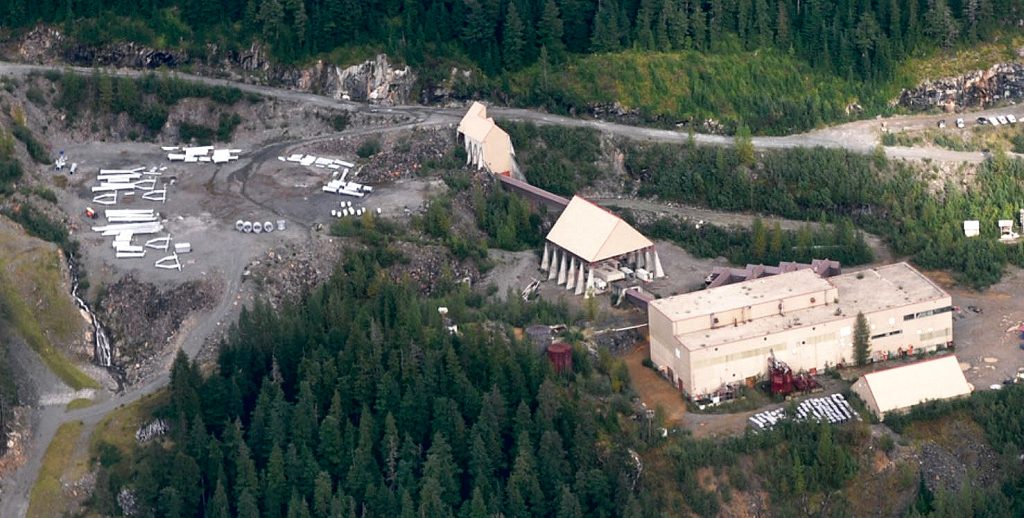Ascot Resources to commence Premier exploration, British Columbia

Ascot Resources Ltd. [AOT-TSX; AOTVF-OTCQX] provided an overview of the 2023 exploration program at the company’s Premier gold project, located on Nisga’a Nation treaty lands in the prolific Golden Triangle of northwestern British Columbia.
The program consists of an initial 10,000 metres of surface drilling and will include exploration drilling for resource expansion as well as in-fill drilling of early mining areas at the Big Missouri and Premier deposits. The exploration drilling will focus on extending the Day Zone at Big Missouri and the Sebakwe Zone north of the Premier mill. Up to an additional 4,000 metres of drilling have been budgeted and will be deployed towards surface and underground drilling depending on results of the initial 10,000 metres and the geophysical program.
The 2023 exploration program will commence in June with a ground geophysical induced polarization (IP) survey aimed at extensions of mineralization in various parts of the property. The initial survey consists of approximately 30 line-km but can be extended if warranted by initial results.
Derek White, President and CEO, commented, “Having recently closed a flow-through private placement, we are now eager to use the proceeds to advance our 2023 exploration program at PGP, both for surface drilling on high-priority targets such as the Day Zone and Sebakwe Zone, and also various IP geophysics projects for further target identification. Similar to previous programs, drilling in 2023 will be primarily focused on step-out targets with the goal of resource expansion near known areas and adding accretive gold ounces into future mine plans without the need for much incremental underground development.”
Ascot is planning to start the exploration drilling in late June in the area of the Premier deposit and move to Big Missouri later this summer when the snow is completely melted. Additional holes may be added in the Premier area towards the end of the exploration season.
The drilling at Premier will be aiming to follow up encouraging results from the last two years at the Sebakwe Zone where high-grade intercepts outlined significant potential to the north of established resource areas. The westernmost holes from the 2022 drill program intercepted a younger dyke that terminated mineralization in this direction.
Drilling to the west of the dyke is sparse to non-existent and consequently there is high potential for the Sebakwe Zone to continue to the west and northwest. Additional drilling will target early mining areas at the Premier deposit.
Drilling at Big Missouri is primarily designed to expand the emerging Day Zone at the western and northwestern side of the Big Missouri deposit. Drilling in 2021 and 2022 established a north-south striking zone of mineralization with high-grade intercepts underlining the potential of this zone. The Day Zone is striking north towards the Martha Ellen deposit with an unexplored gap of approximately 1,000 metres between the two zones of mineralization.
Additional drilling at Big Missouri will target early mining areas at this deposit. Underground development at Big Missouri will recommence at sometime this summer and underground drill stations will become available as mining progresses. The company plans to target resource areas from underground as soon as possible with shorter drill holes that can be aimed with higher precision compared to longer surface drill holes.
Ascot plans to conduct an induced polarization geophysical survey north of the Premier mill and at the Day Zone and the Dilworth deposit at Big Missouri for a total of approximately 30 line-km.
The program at Premier is targeting the western extension of the Sebakwe zone that was successfully drilled in 2021 and 2022. This area is fairly steep and forested with difficult access and has been neglected in the past by exploration in favor of other areas with easier logistics.
The IP grid at the Day Zone is targeting the northern extension of mineralization towards the Martha Ellen deposit. Mineralization has been traced by drilling along a north-south strike and the presence of mineralization is indicated by high-grade soil samples. There is a notable gap in the soil coverage that will be targeted by the IP survey in order to gauge the potential extent of mineralization in this largely unexplored part of the property. Another grid is planned at the northern extension of the Dilworth deposit north of Martha Ellen where surface showings are abundant but previous drilling is limited. The survey is designed to provide geophysical targets for follow up drilling.
